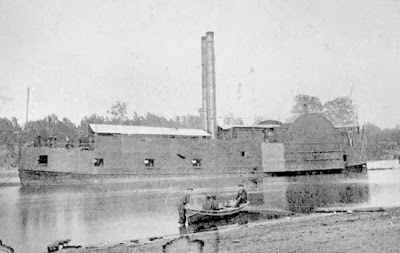United
States President Abraham Lincoln wrote a letter on January 26th 1863
to Union General Joseph Hooker upon his ascending to command of the Army of the
Potomac.
Union
General Joseph Hooker was the fourth in a line of commanding General of the
Army of the Potomac, a part of President Abraham Lincoln’s search for a general
who would give him a victory. When
Hooker was given command, Lincoln placed a letter in his hand stating Hooker’s
good and bad qualities it commended his bravery, military skill, and confidence,
as well as the fact that the President knew Hooker had undercut Union General
Ambrose E Burnside. Hooker told Noah
Brooks; a reporter, that it was the kind of “letter as a father might write to
his son. It is a beautiful letter, and, although I think he was harder on me
than I deserved, I will say that I love the man who wrote it."
It was only
five months later that Lincoln replace Hooker with Union General George G Meade
right before the Battle of Gettysburg.
The letter
written January 26, 1863 follows as:
Major
General Hooker:
General.
I have
placed you at the head of the Army of the Potomac. Of course I have done this
upon what appear to me to be sufficient reasons. And yet I think it best for
you to know that there are some things in regard to which, I am not quite
satisfied with you. I believe you to be a brave and a skilful soldier, which,
of course, I like. I also believe you do not mix politics with your profession,
in which you are right. You have confidence in yourself, which is a valuable,
if not an indispensable quality. You are ambitious, which, within reasonable
bounds, does good rather than harm. But I think that during Gen. Burnside's
command of the Army, you have taken counsel of your ambition, and thwarted him
as much as you could, in which you did a great wrong to the country, and to a
most meritorious and honorable brother officer. I have heard, in such way as to
believe it, of your recently saying that both the Army and the Government
needed a Dictator. Of course it was not for this, but in spite of it, that I
have given you the command. Only those generals, who gain successes, can set up
dictators. What I now ask of you is military success, and I will risk the
dictatorship. The government will support you to the utmost of its ability,
which is neither more nor less than it has done and will do for all commanders.
I much fear that the spirit which you have aided to infuse into the Army, of criticizing
their Commander, and withholding confidence from him, will now turn upon you. I
shall assist you as far as I can, to put it down. Neither you, nor Napoleon, if
he were alive again, could get any good out of an army, while such a spirit
prevails in it.
And now,
beware of rashness. Beware of rashness, but with energy, and sleepless
vigilance, go forward, and give us victories.






















